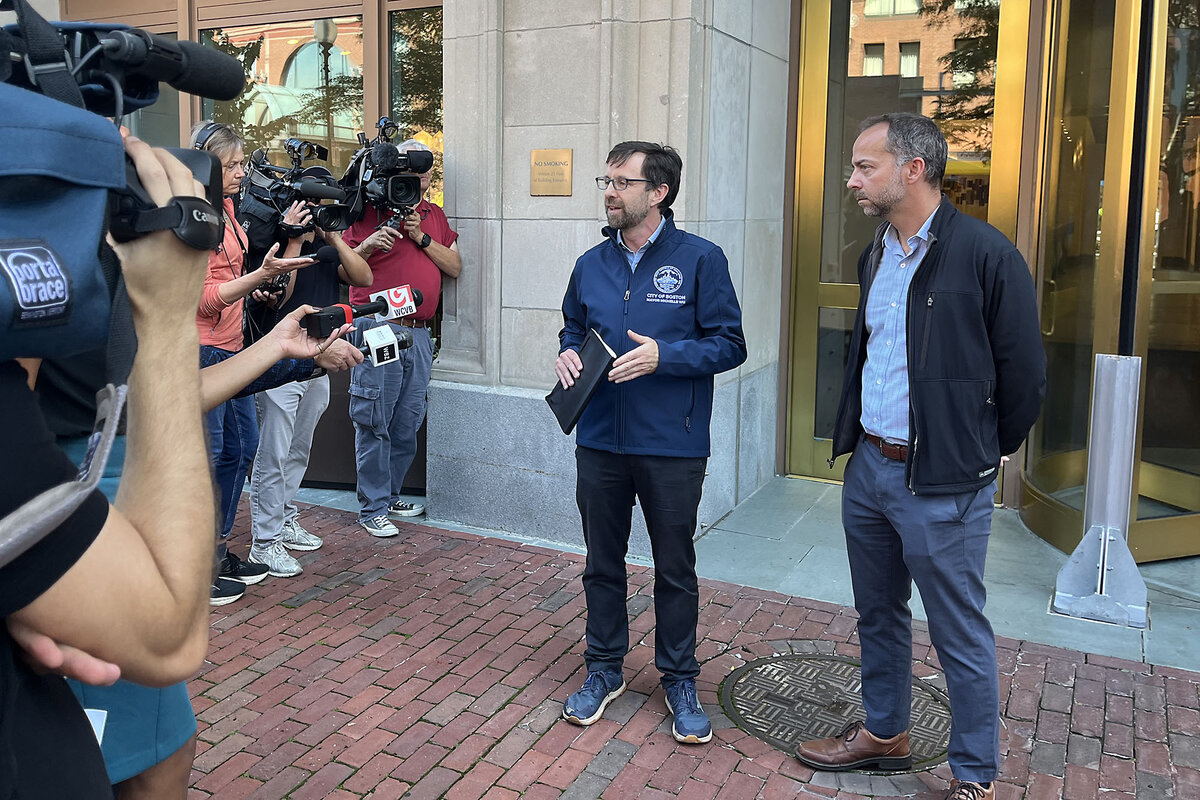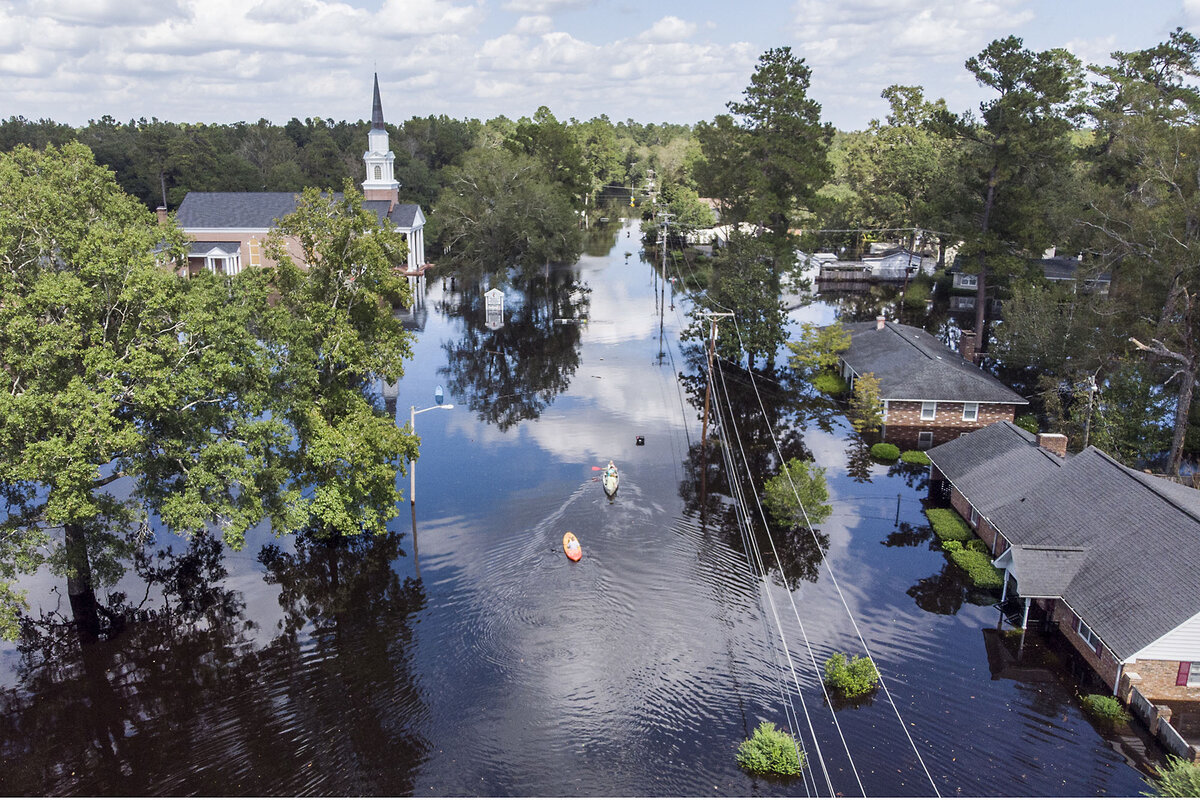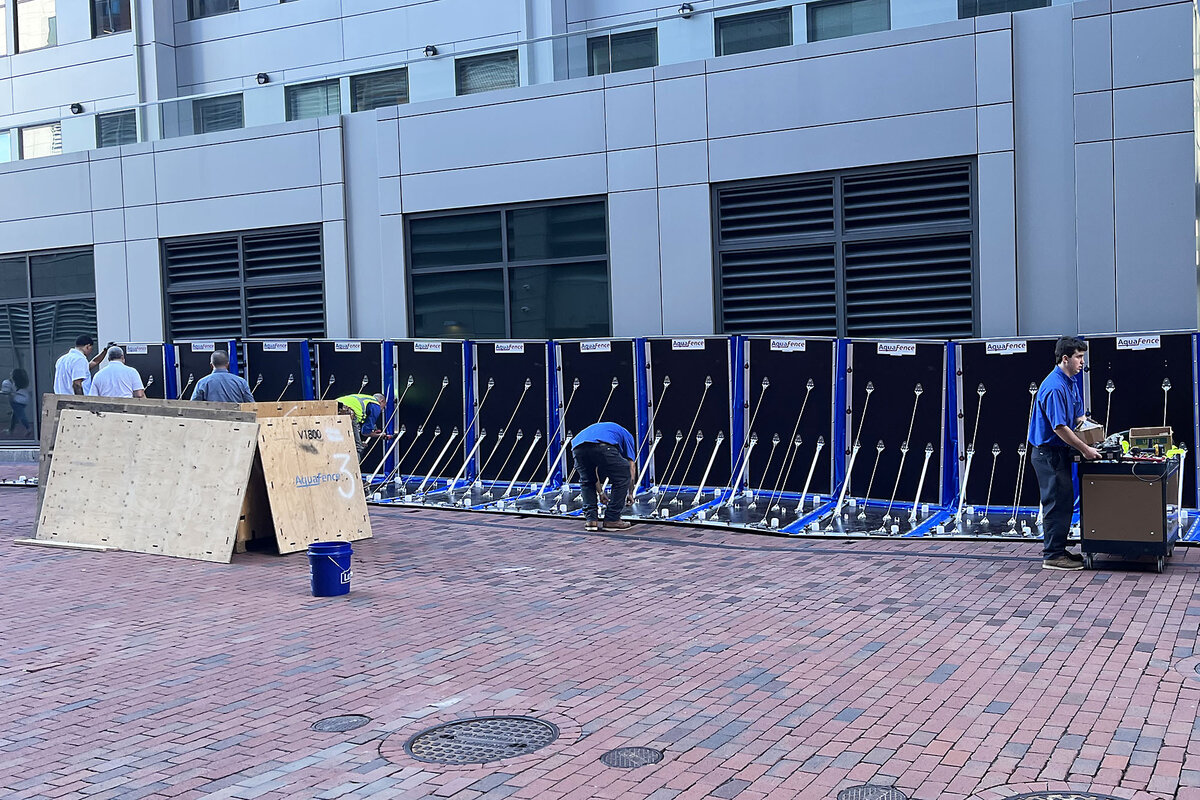Cities scramble to make up for cuts in flood-safety funding
Loading...
Ever since Superstorm Sandy barely missed Boston in 2012, the city has been working to protect itself from coastal threats that could cause a flooding disaster.
After all, due to tides, it was by “a matter of hours, not a matter of miles,” that Boston was spared, recalls Brian Swett, who is now Boston’s climate resilience officer.
The city has done everything from elevating athletic fields, building seawalls, and engineering a waterfront park to contain flooding. And, like other cities up and down the East Coast, it has depended on a key source of funding to make these changes: the Building Resilient Infrastructure and Communities program, commonly known by the acronym BRIC.
Why We Wrote This
Across the U.S., federal grants helped communities prepare for more severe rainfall events and flooding. With a key grant program cut, it’s unclear where the money will come from now.
Created during the first Trump administration, the program pledged to boost “research-supported, proactive investment in community resilience” over “reactive disaster spending.” Under President Joe Biden, BRIC’s pot of money grew from $590 million to as much as $2.4 billion, according to federal data cited by the Natural Resources Defense Council .
But this April, President Trump canceled the program, calling it “wasteful and ineffective.” While his administration said it would maintain $3.6 billion in a disaster relief fund to help response and recovery efforts, there will be no more grants for communities trying to plan for a future that scientists say will involve more flooding and increasingly powerful storms.
To some degree, that future may already be arriving. Deluges in July led to flash floods in communities across the country, including Kerr County, Texas, where 135 people died. New Mexico and New Jersey also experienced deadly floods. Major U.S. cities have been affected, with three New York subway lines inundated last week. Earlier in July, a storm submerged some Chicago streets and viaducts.
With BRIC eliminated, communities trying to plan for disasters – and lessen the damage they do – now must find other sources of support, or potentially eliminate projects. And the federal pullback raises questions about whether smaller communities with fewer resources will be left behind.
“A lot of these issues are in no way political”
For many municipal leaders, the federal shift means trying to figure out new ways of preparing for what many see as inevitable: more people living in storm-prone areas along the coast, and more frequent heavy rainfall because of global warming.
The idea of climate resilience has become popular among municipal officials in part because it’s safe and technocratic – not ideological or moralizing in the way the traditional environmental movement can be, says Thaddeus Pawlowski, director of Columbia University’s Center for Resilient Cities.
In South Carolina, for instance, the mayor of storm-vulnerable Charleston is a Republican, and an enthusiastic supporter of resilience planning, says Anna Kimelblatt, communities and transportation program director for the Coastal Conservation League, which focuses on protecting that state’s coastline.
“In my opinion, a lot of these issues are in no way political,” she says.
Communities across South Carolina have been scrambling to find different pots of money for their projects, says Ms. Kimelblatt. Those projects included $2.7 million to help mitigate flooding in the town of Conway, near Myrtle Beach, and $5.5 million for a drainage project in Mt. Pleasant, just outside Charleston.
That might mean tapping into the general budgets, trying for other federal grants, or tapping into state grants, such as those available for stormwater infrastructure upgrades. Or, says Ms. Kimelblatt, it could mean abandoning resilience projects altogether. That, she says, “will likely be the more common outcome, unfortunately,” she said.
How communities are responding to the cuts
Indeed, without federal intervention to bolster poorer communities, only the most well-resourced communities have a fighting chance, says Rachel Cleetus, senior policy director for the Union of Concerned Scientists.
“A small community that doesn’t have those kinds of assets ... could be caught in a spiral of diminishing investments as they see flooding worsen,” she says.
A city spokesperson for the South Carolina city of Conway, for instance, told the local newspaper that it is “unknown” if the city, population 28,000, will be able to pay for flood mitigation without BRIC funds.
A city like Boston, with vastly more resources, has more options.
Although Boston expected $23 million from BRIC to elevate Joe Moakley Park, Mr. Swett told the Boston Globe in April that the city will seek alternative federal grants and is committed to avoiding delays to either project. Also, the city said it set aside $75 million for resilience projects in the early days of the Trump presidency.
In New York, the nearly $1.5 billion East Side Coastal Resiliency project was the city’s first big project after Sandy, says Mr. Pawlowski, of Columbia. It elevates the East River Park by eight feet and rebuilds new parkland on top. The 2.4-mile long project also adds 18 flood gates – including one that is 79 feet long – and concrete flood walls.
The federal government put $338 million toward the project, but New York paid the rest by itself, according to the city.
Other cities are devoting significant resources to coastal resilience, Ms. Cleetus says. Miami, which has a Republican mayor, issues the Miami Forever Bond, which pledges $400 million for focus areas that include “sea-level rise and flood prevention.”
“We’ve locked in a bunch of [climate] change already,” says Daniel Zarrilli, who previously served in New York City’s climate resilience office. Climate scientists, he explains, say that “sea levels are gonna continue to rise for some period of time, through our lifetimes, almost regardless of what we do.”
Resilience can take other forms, says Anna Weber, a senior policy analyst at the Natural Resources Defense Council. State and local governments have a lot of authority over local laws like building codes and zoning requirements, she says. That means they can, for example, require plans that account for more severe flooding. They can also prevent people from building homes in flood-prone areas, she says.
That is likely to become increasingly important for coastal communities, regardless of size.
Editor's note: The spelling of Anna Kimelblatt's and Daniel Zarrilli's names were corrected on July 25, the day of initial publication.








